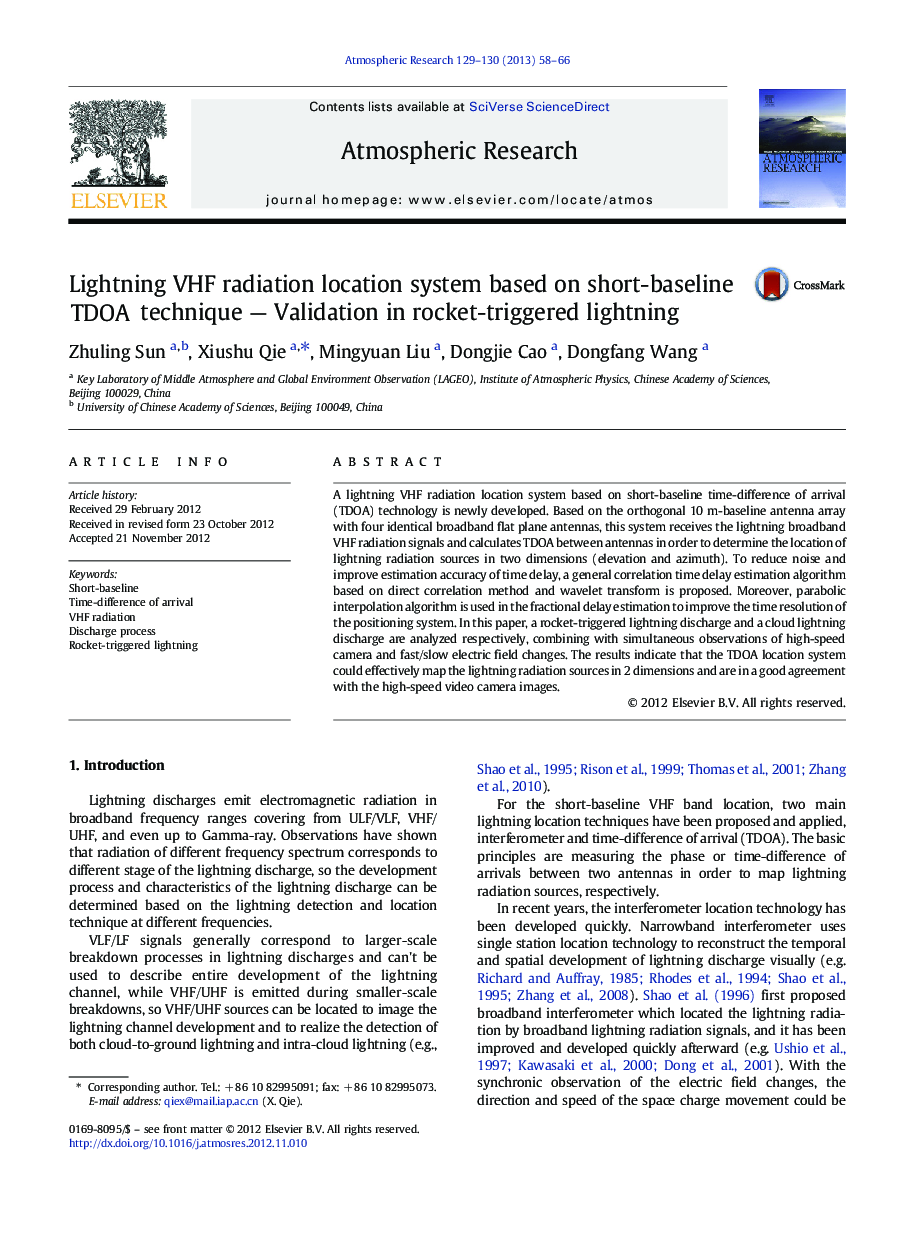| Article ID | Journal | Published Year | Pages | File Type |
|---|---|---|---|---|
| 4450008 | Atmospheric Research | 2013 | 9 Pages |
A lightning VHF radiation location system based on short-baseline time-difference of arrival (TDOA) technology is newly developed. Based on the orthogonal 10 m-baseline antenna array with four identical broadband flat plane antennas, this system receives the lightning broadband VHF radiation signals and calculates TDOA between antennas in order to determine the location of lightning radiation sources in two dimensions (elevation and azimuth). To reduce noise and improve estimation accuracy of time delay, a general correlation time delay estimation algorithm based on direct correlation method and wavelet transform is proposed. Moreover, parabolic interpolation algorithm is used in the fractional delay estimation to improve the time resolution of the positioning system. In this paper, a rocket-triggered lightning discharge and a cloud lightning discharge are analyzed respectively, combining with simultaneous observations of high-speed camera and fast/slow electric field changes. The results indicate that the TDOA location system could effectively map the lightning radiation sources in 2 dimensions and are in a good agreement with the high-speed video camera images.
► The short-baseline TDOA VHF lightning radiation sources location system was introduced. ► The radiation source location results of a rocket-triggered lightning and an intra-cloud lightning were analyzed. ► The method of signal processing and localization algorithm is introduced were introduced.
